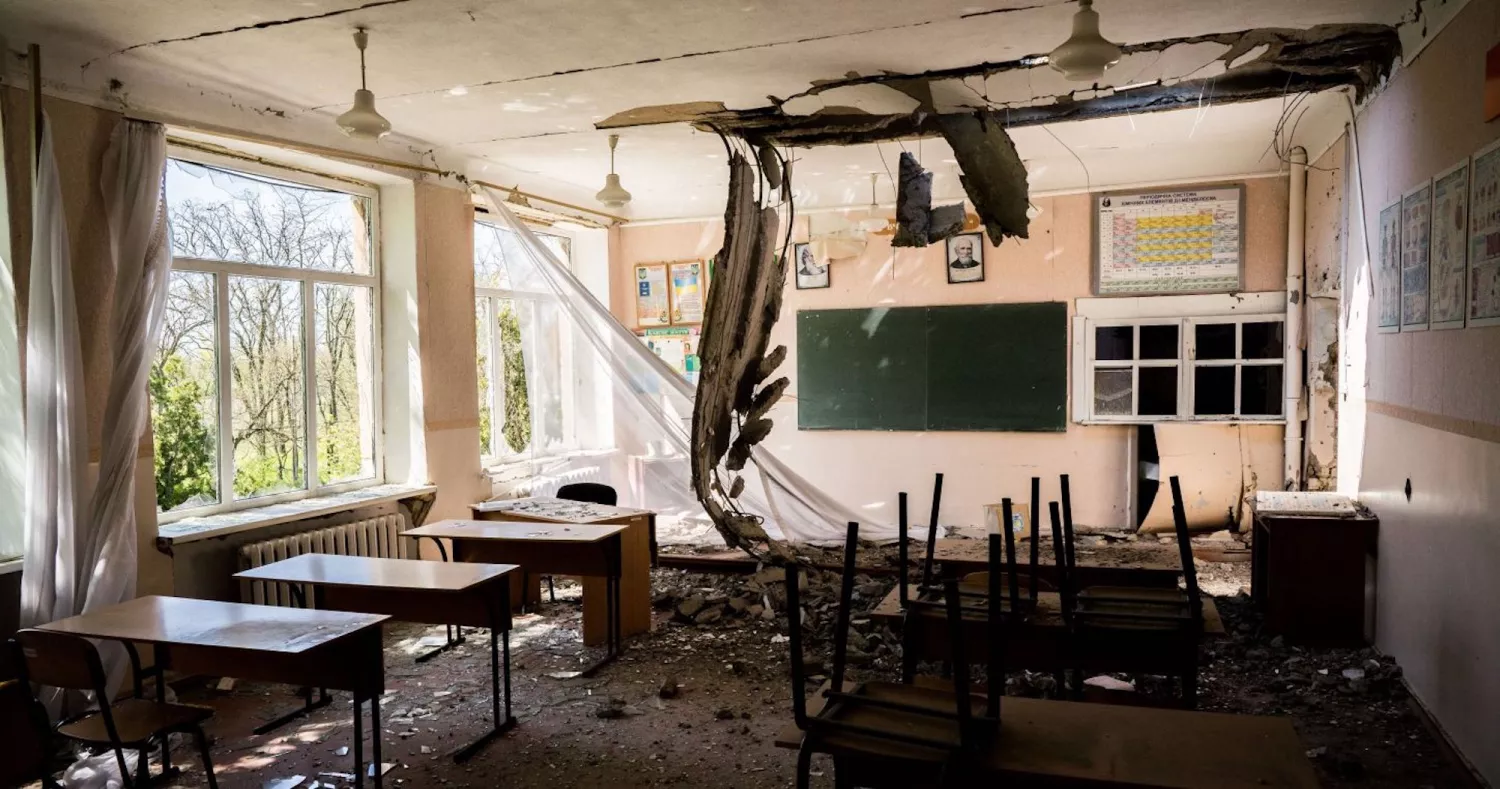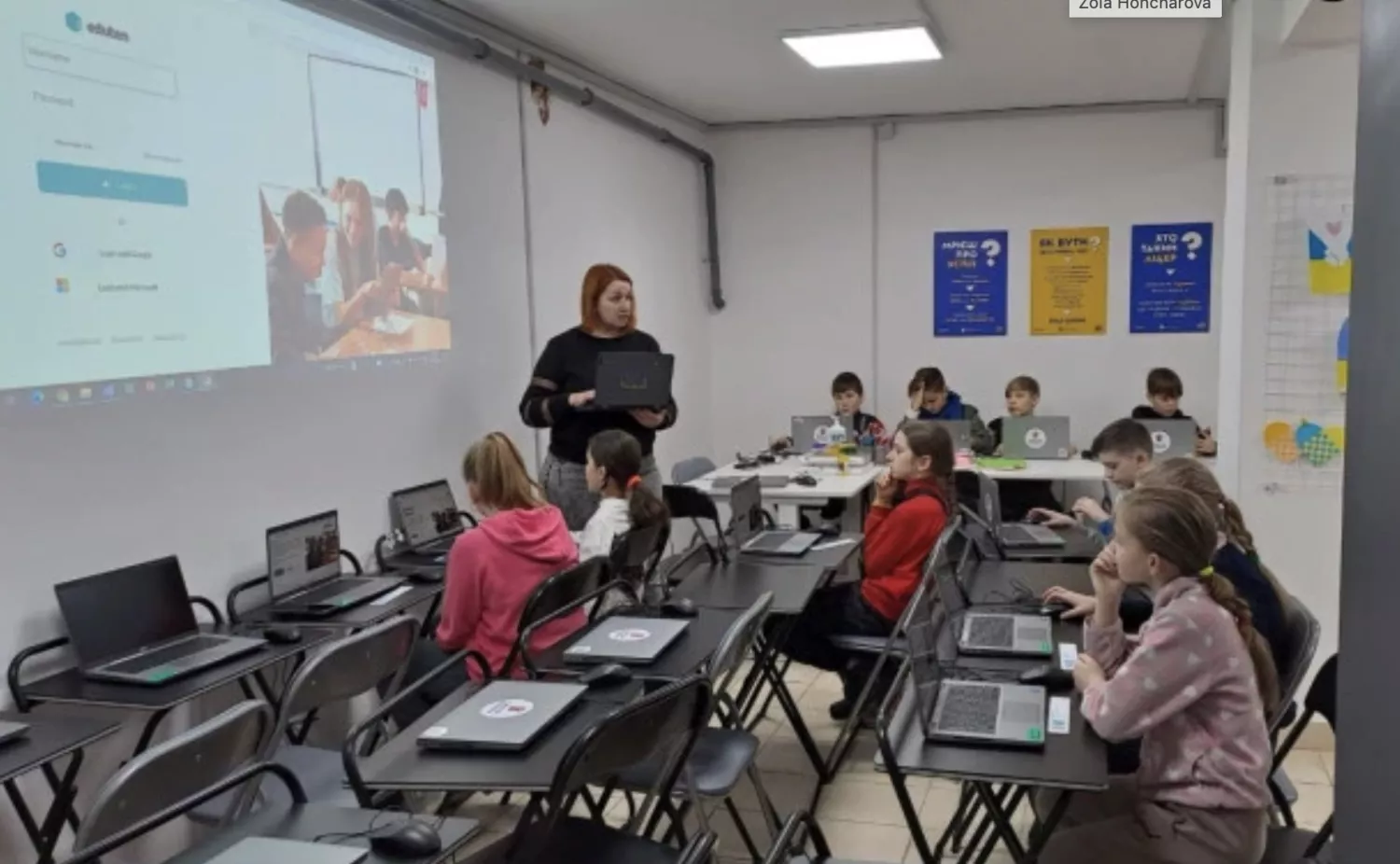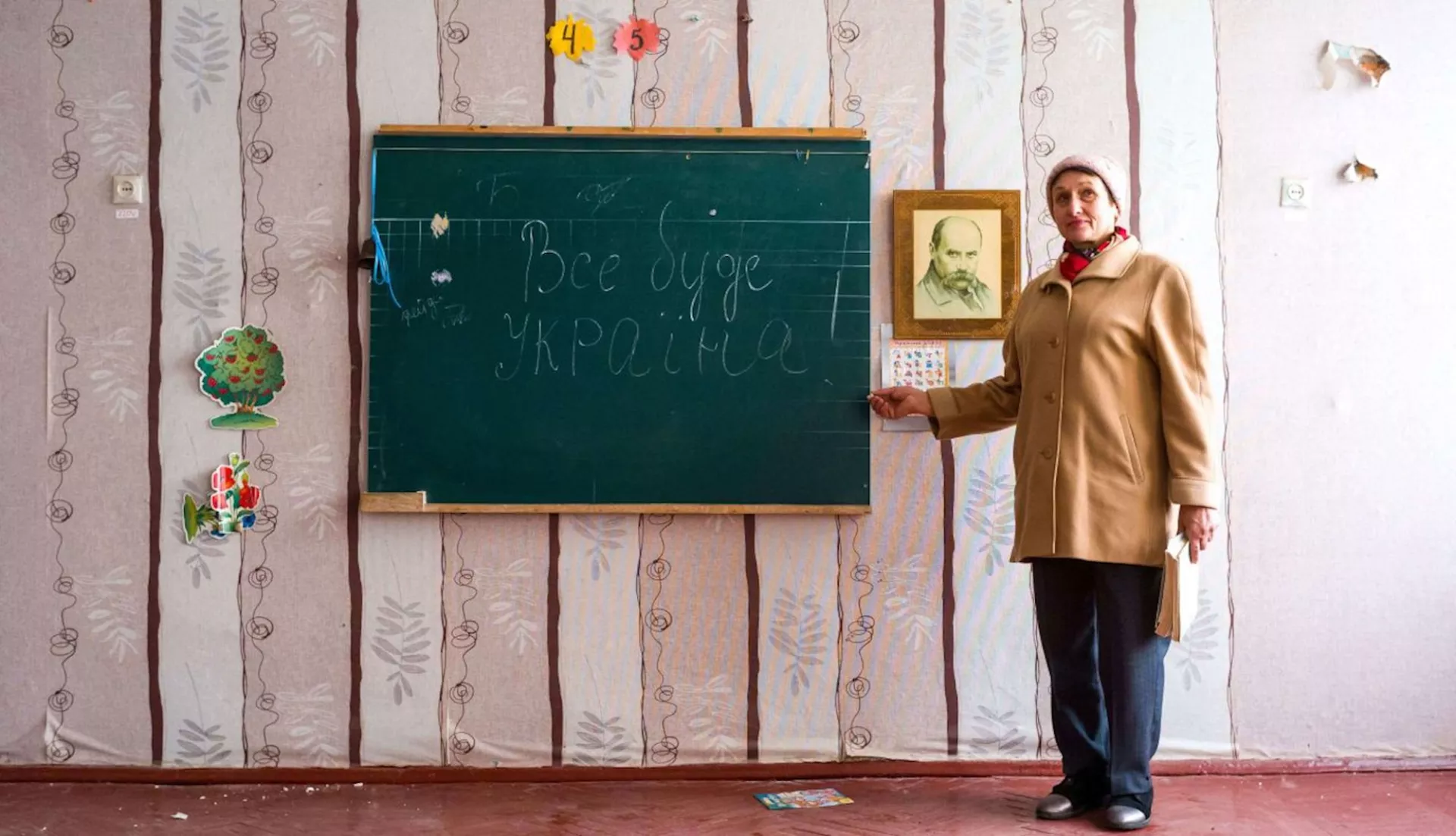Key Takeaways
- As the war on Ukraine continues, only 25 percent of schools across the country are open.
- That hasn't stopped Ukraine's brave educators in finding new ways to educate their students in the war-torn country. As educators help students cope with trauma, they must also cope with their own.
- Education unions around the world have rallied to support their colleagues in Ukraine.
When the Russian invasion of Ukraine began last year, Kateryna Maliuta-Osaulova and her two sons, a 4-year-old and a 1-year-old, retreated to their basement where they stayed for several weeks with some neighbors. Her husband joined the local defense forces.
It was February, and it was cold. They had no beds, no kitchen to prepare food, and the shelling outside was constant. They endured many sleepless nights, kept awake by explosions and fear. The children cried inconsolably.
Today, Maliuta-Osaulova and her family are safe, for now, and grateful to be alive—but the horrors of war continue.
“It will be many years before the education system and young people of Ukraine recover,” says Maliuta-Osaulova, who works with Ukraine’s teachers in her role as international secretary of the Trade Union of Education and Science Workers of Ukraine.
Now, they struggle every day to adapt to the realities of war—the practical and the psychological. Only 25 percent of schools across Ukraine are open.
“During the bombing, schools were destroyed or damaged, some were seized by Russian forces, and many teachers were forced to leave their homes with their families and seek refuge in less dangerous regions of Ukraine or abroad,” Maliuta-Osaulova says. Russia’s invasion of Ukraine has led to the largest flow of refugees in Europe since World War II.
“During constant air raid sirens, it’s difficult to [concentrate on lessons] and where there are widespread power outages from damaged infrastructure, teaching can be impossible.”
Heroic Efforts to Keep Education Going
So the educators adapt: They record lessons in advance (when there is electricity) and send them to students; they conduct virtual lessons where there are no school buildings but power is on; and they repeat lessons for students who could not connect to class due to the absence of electricity (usually in the afternoon).
Videos that show teachers instructing students in bomb shelters during active bombardments have been going viral on social media, reports Outlook India. Gas stations and grocery stores, powered by generators, have also been transformed into hubs for filming virtual lessons.
Teachers work in shifts, switching from online to offline learning depending on whether they’re safe and have electricity. In the absence of electricity at home, they look for other places to connect to the internet so that they can keep providing what their students need.
The trauma, however, is much more difficult to manage.

Children, Most Vulnerable to Trauma, Continue to Suffer
One teacher recently received a call from the father of one of the best students in his class. The boy had fallen into a coma. According to doctors, the coma was caused by the stress of constant shelling. The family lived in a hot zone where active hostilities were ongoing. For six months, the child saw rockets, heard cannons, and even witnessed phosphorus bombs falling, and his anxiety and fear rose to dangerous levels.
“The doctors are sure that the cause of the schoolboy's coma was constant anxiety,” Maliuta-Osaulova says. “How many more children are experiencing such trauma in Ukrainian towns and villages?”
War has a devastating effect on people’s mental health, especially among children as the most vulnerable group. Education plays a crucial role in supporting these children’s well-being. Some kids withdraw, others become aggressive, all of them struggle with overwhelming anxiety and stress—with no idea how to cope with it.
“War is a new, frightening experience for all of us,” says Maliuta-Osaulova.
Zoia Honcharova, a math teacher at Chernihiv Institution of Comprehensive Secondary Education #3, told UNESCO that the lack of electricity and internet is a challenge for her, but said that the most difficult thing was “to look at children's eyes… and not to shed tears.”
Violence Against Civilians is a Primary Fear
Teachers must find ways to help their students cope, but they must also cope with their own trauma. Many have lost family members, others are homeless, their houses destroyed by bombs. The fear of Russian troops is one of the most debilitating traumas.
“What scared me the most was when the Russian army was three kilometers away from our house,” says Maliuta-Osaulova. “We had heard about their cruelty. The fear for my children was probably the most terrifying and uncontrollable feeling. After the liberation of every new corner of Ukrainian land, every Ukrainian village or town, we see the overwhelming joy of freed people, but we also see the same horrible picture of occupation—destruction, murder, and violence.”

“It is painfully clear [Russia] widely uses violence against civilians, in particular sexual violence, as a weapon of war,” she adds. “Rape has become a too common practice of the Russian occupiers.”
According to one victim, she says, a Russian soldier said the purpose of sexual violence was “that Ukrainian women would not want to have sexual contact with any man, to prevent them from giving birth to Ukrainian children.”
Deportations and Forced Curricula
Her colleagues in the eastern regions have told her about forced deportations, including teachers, to areas occupied by Russia.
“Teachers under occupation are in an extremely difficult situation,” she says. “The Ukrainian education system is being destroyed in these territories. The so-called ‘occupation authorities’ force teachers to work according to the Russian curricula.
Teachers are threatened with torture and arrest for refusing to cooperate with the occupiers, and parents who do not allow their children to go to school are threatened with having their children taken away to boarding institutions. It's hard to believe that this is happening in the center of Europe in the 21st century.”
The forced curricula rewrites history and erases Ukrainian identity, yet the vast majority of teachers in occupied territories have refused to cooperate with the occupiers at great personal risk.
David Edwards, Education International general secretary, condemned this oppression and violence, and reaffirmed the solidarity of educators around the world: “Our colleagues have put up a remarkable and admirable resistance in defense of their students and country. We are all in awe of their bravery and stand with them.”
The call to support the Trade Union of Education and Science Workers of Ukraine has resonated in education unions around the world, who steadfastly support Ukraine and condemn Russia’s invasion, including the National Education Association (NEA).
"Students around the world deserve safety, security, and access to a quality education—and they deserve to inherit a world at peace," says NEA President Becky Pringle. "After one year of this war, we continue to condemn Russia's grave and unjustifiable invasion and stand with the people of Ukraine and all those speaking up for peace."
Union Solidarity Brings Much-Needed Support to Ukrainian Teachers
Education International has been working closely with its affiliate, the Trade Union of Education and Science Workers of Ukraine (TUESWU), to identify needs on the ground and respond effectively.
Priorities include addressing educators’ basic needs, maintaining union operations, creating safe learning environments, offering professional development, providing resources, and fostering dialogue.
Through the solidarity funds received from union colleagues all over the world (NEA has been a major contributor), TUESWU has been able to support its regional branches and offer direct help to members. This includes meeting the basic needs of bereaved educators and also helping members with shelter, food, water, and medical care.
The union also has focused on maintaining its core operations. Through the EI solidarity fund, the union has been able to buy a generator to heat its office in colder months, as well as textbooks, school supplies, and technology.
“Our Ukrainian colleagues’…fight for democracy and freedom is a fight on behalf of educators and students all over the world. Their fight is our fight. The widespread and continuous expressions of solidarity and support from Education International’s member organizations prove that we stand together and will continue to stand together whenever and wherever educators, education, or our freedom is under attack.”
– Haldis Host, Deputy General Secretary, Education International
The union has also been active in repairing damaged schools, suggesting security measures to ensure the safety of educators and students, and supporting the training of educators on how to address trauma and promote mental health among students.
Educators were offered professional development to help them stay motivated and maintain their skills in a challenging teaching environment. The union trainings helped create a sense of community and support. Collaborative union meetings were organized to share experiences and best practices, provide support to one another, and develop innovative solutions to today’s challenges.
The union support, as well as the bravery and resilience of the Ukrainian people, have been critical for students and teachers during the past year of war—but ongoing support is necessary.
“We have no doubt that Ukraine will win and will be peaceful and free again,” says Maliuta-Osaulova. “But the wounds run deep, and the physical and psychological trauma will not disappear overnight. It will take years, if not entire lifetimes, to come to terms with what we suffered and lost so unfairly.”


